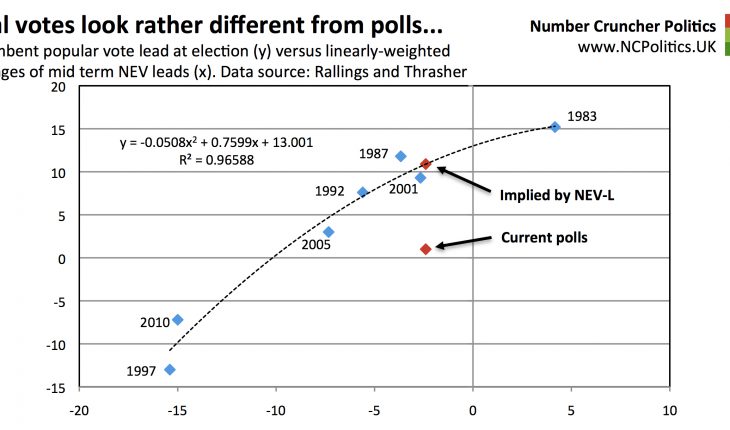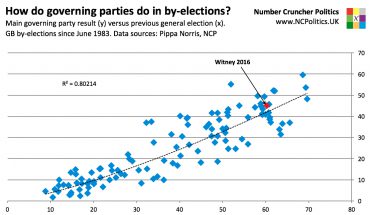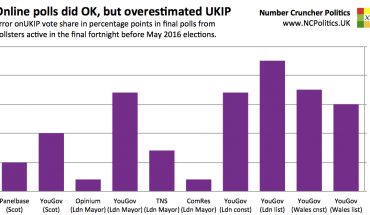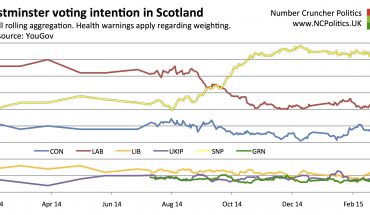2010 to date
There is a limited body of comparable data to work with between elections – we can’t compare national polls plus a uniform swing to by-elections in any “apples-to-apples” sense, as there is a strong historical tendency for them to be biased indicators. What we can do is compare by-elections with specific by-election polls, and compare the European elections with European election polls.
European election polling in 2014, including all the polls in the final week, was by way of online panel. The results showed a consistent and very familiar pattern. Five of the six pollsters underestimated Conservative support (the average error across all six was -1.7 points) and a different five of the six overestimated Labour support (overall error: 1.6 points). All six pollsters overestimated Labour’s lead over the Conservatives, the average being the net of the two, 3.3 points.
Constituency polling, including of by-elections, is always done by phone. I noted in this piece for the LSE about mode effects in polling that there was also noticeable impact on the phone-online divergence around the time that Labour’s lead began to fall in 2013. Prior to that, by-election polls had not tended to show a shy Tory factor. Since then, every poll in every by-election (the first of which was Wythenshawe and Sale East in Feb 2014) had a shy Tory factor averaging 5.5 points (4.6 points in Lord Ashcroft’s polls). The average across all 16 polls with a “real votes” comparison in the last two years has been 4.7 points.

Some have suggested that there might be a shy Lib Dem factor. While this is a perfectly plausible theory, there doesn’t seem to be any sign of it in the data – In the European elections the final polls averaged 7.5%, as compared with the result of 6.9%. Their by-election results have typically been in the neighbourhood too (including for their successful defence at Eastleigh).
To be sure, both midterm elections and by-elections are usually low-turnout ballots that attract substantial “protest” votes. But the patterns in polling error for these have been remarkably consistent, both internally and with the historical experience.
(Continued, please navigate using numbered tabs…)





